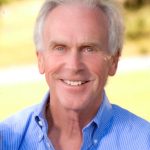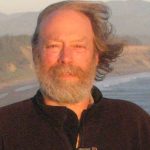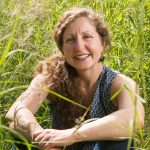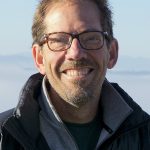Better Dead than Gone: Rep. Walden pushes for dead tree removal and replanting
By Henry Houston, originally published by Eugene Weekly, August 9, 2018
The state of Oregon currently faces 14 fires, affecting nearly 180,000 acres, according to the National Interagency Fire Center. When the fire season is over, some of what’s left is dead, burned trees.
But what happens to those burned trees?
Eastern Oregon Rep. Greg Walden is urging the U.S. Senate to adopt the House’s version of the 2018 Farm Bill, which would remove burned, dead trees from public lands “while they still have value and replant” forest — just like private timberlands do.
It’s common sense, Walden says, in an email newsletter to constituents.
That’s a problematic strategy, according to Dominick DellaSala, president and chief scientist at Geos Institute in Ashland.
Better Dead than Gone: Rep. Walden pushes for dead tree removal and replanting
By Henry Houston, originally published by Eugene Weekly, August 9, 2018
The state of Oregon currently faces 14 fires, affecting nearly 180,000 acres, according to the National Interagency Fire Center. When the fire season is over, some of what’s left is dead, burned trees.
But what happens to those burned trees?
Eastern Oregon Rep. Greg Walden is urging the U.S. Senate to adopt the House’s version of the 2018 Farm Bill, which would remove burned, dead trees from public lands “while they still have value and replant” forest — just like private timberlands do.
It’s common sense, Walden says, in an email newsletter to constituents.
That’s a problematic strategy, according to Dominick DellaSala, president and chief scientist at Geos Institute in Ashland.
Oregon forest carbon monitoring and reporting suggestions to ODF
Comments submitted on August 1 to the Oregon Department of Forestry (ODF) to help inform its legislative mandate (HB 5201) on the development of a statewide carbon policy framework, and to assist in presenting the best available science for forest carbon accounting. Read the full comments.
To thin or not to thin: That is the question
By Marc Heller, E&E News reporter | Originally published Tuesday, August 7, 2018 at E&E News.
GROVELAND, Calif. — The Rim Fire, which burned 257,314 acres of forest in 2013, was the biggest wildfire on record for the Sierra Nevada. Forest Service officials declared large areas of the Stanislaus National Forest “nuked” into a “moonscape” where pine trees might not grow back for a generation.
But five years later, Chad Hanson — a forest ecologist who opposes logging on federal lands — can barely avoid stepping on the ponderosa pine saplings that have taken root amid the blackened trunks in one fire-damaged patch of the 898,099-acre national forest. Here, where the Rim Fire burned especially hot, one of the biggest questions about the future of America’s climate-challenged woodlands plays out around Hanson’s ankles: Are forests healthier and safer if humans mostly leave them alone?
Circling the Drain: The Precautionary Principle and Northern Spotted Owl
Geos Institute Chief Scientist speaks on the importance of scientific integrity in endangered species conservation at the NACCB 2018 Symposium. (starts around 45:00)
An Interview with Dr. Dominick DellaSala
In this interview by Kristen Hirsh-Pearson, Ex-Situ Board Member of the Montreal Chapter of the Society for Conservation Biology and M.Sc. Candidate in the Venter Lab at the University of Northern British Columbia, Dr. Dominick DellaSala speaks about his work, the state of global biodiversity conservation, and has words of wisdom for the next generation of conservation biologists.
Dominick DellaSala, Barbara Zimmerman and Andy MacKinnon: Call for action on B.C.’s old-growth rainforests
As scientists, we have travelled the world’s rainforests on several continents. Few temperate places rival B.C.’s rich rainforest tapestry and its life-giving benefits.
Canadians are fortunate that B.C.’s globally rare old-growth rainforests are working behind the scenes all the time — helping to stabilize the climate, upholding irreplaceable cultural values of Indigenous peoples, and supporting tourism and recreation jobs. All of that is at risk, however, if logging continues at its current liquidation rate.
This alarming trend recently caught the attention of over 220 of the world’s scientists, who sent a letter to Premier John Horgan calling on the government to protect the remaining intact rainforests.
Unfortunately, British Columbia lacks a provincewide policy for protecting old-growth rainforests. On the one hand, the Great Bear Rainforest Agreement — forged in 2016 by provincial and First Nations governments — is a global conservation model. On the other hand, logging on Vancouver Island and in the Interior is a complete reversal of Canada’s responsible forest management commitments. If B.C. is going to survive the coming climate-change storm, it needs to unify its forest protection policies before its old-growth forest legacy is gone.
Keep reading at The Province
Hundreds of international scientists call for urgent action to protect B.C’s rainforests
SFU student explains why the logging of these forests can be disastrous
By: Srijani Datta, Assistant News Editor
Originally published July 18, 2018 at The Peak
On June 28, 223 international scientists called on the British Columbia government to stop the incessant logging of temperate rainforests in the province. The scientists addressed their concerns in a letter titled “International Scientists’ Call for Action to Protect Endangered Temperate Rainforests of British Columbia, Canada.”
The letter was organized by Dr. Dominick DellaSala, chief scientist at the Geos Institute in Ashland, Oregon. In a press release announcing the release of the letter, DellaSala highlighted the significance of BC’s forests and discussed how rare they are.
The inconvenient truth about forest fires
By Dominick DellaSala, Timothy Ingalsbee, and Luke Ruediger
July 29, 2018, Medford Mail Tribune
It seems like every time there is a forest fire, the timber industry blames environmentalists for a lack of “active forest management” and presumes that contemporary fires have catastrophic ecological consequences. David Schott’s opinion piece in the Mail Tribune July 22 does just that, using the Klamathon fire as an example.
But this fire began on residential land, not in the backcountry environmentalists seek to protect. It made its largest run on private residential, ranch, and timber land, pushed by strong winds. More roads and logging advocated by Schott will not protect communities nor maintain our natural environment.
The forests of our region are some of the most biologically diverse on the planet. Like a phoenix rising from the ashes, fire resets nature’s successional clock from biologically rich old growth to also rich new forest — the circle of life. Fires were historically set by Native Americans to manage culturally important wildlife habitats.
The inconvenient truth about forest fires
By Dominick DellaSala, Timothy Ingalsbee, and Luke Ruediger
July 29, 2018, Medford Mail Tribune
It seems like every time there is a forest fire, the timber industry blames environmentalists for a lack of “active forest management” and presumes that contemporary fires have catastrophic ecological consequences. David Schott’s opinion piece in the Mail Tribune July 22 does just that, using the Klamathon fire as an example.
But this fire began on residential land, not in the backcountry environmentalists seek to protect. It made its largest run on private residential, ranch, and timber land, pushed by strong winds. More roads and logging advocated by Schott will not protect communities nor maintain our natural environment.
The forests of our region are some of the most biologically diverse on the planet. Like a phoenix rising from the ashes, fire resets nature’s successional clock from biologically rich old growth to also rich new forest — the circle of life. Fires were historically set by Native Americans to manage culturally important wildlife habitats.
Latest News
Stay Updated!
Sign up to stay updated on our current initiatives and receive information you can use to build resilience in your community.

 Arsum is the Senior Adaptation and Coastal Resilience Specialist for the National Wildlife Federation’s Southcentral Region. In this role, she advances climate adaptation efforts, with a focus on nature-based approaches to address the impacts of climate change and extreme events across the Gulf region. She has authored and co-authored numerous publications on climate impact assessments and adaptation solutions. Additionally, she regularly participates in state-based coastal resilience and hazard mitigation planning across the Gulf, collaborating with regional and local stakeholders.
Arsum is the Senior Adaptation and Coastal Resilience Specialist for the National Wildlife Federation’s Southcentral Region. In this role, she advances climate adaptation efforts, with a focus on nature-based approaches to address the impacts of climate change and extreme events across the Gulf region. She has authored and co-authored numerous publications on climate impact assessments and adaptation solutions. Additionally, she regularly participates in state-based coastal resilience and hazard mitigation planning across the Gulf, collaborating with regional and local stakeholders. Frank is the former President of the Reinsurance Association of America. Frank currently serves on the Advisory Board of the OECD’s International Network for the Financial Management of Large-Scale Disasters, the RAND Center on Catastrophic Risk Management and Compensation, and the University of Cincinnati’s Carl H. Lindner III Center for Insurance and Risk Management Advisory Board.
Frank is the former President of the Reinsurance Association of America. Frank currently serves on the Advisory Board of the OECD’s International Network for the Financial Management of Large-Scale Disasters, the RAND Center on Catastrophic Risk Management and Compensation, and the University of Cincinnati’s Carl H. Lindner III Center for Insurance and Risk Management Advisory Board. Jim is a multilingual world traveler. Based in Bavaria during the 1970s, Jim spent most of this period in India, Afghanistan and Nepal, where he founded and operated a charitable medical clinic serving Tibetan Refugees. He settled in Oregon in 1983 on a forested ranch in the Umpqua National Forest.
Jim is a multilingual world traveler. Based in Bavaria during the 1970s, Jim spent most of this period in India, Afghanistan and Nepal, where he founded and operated a charitable medical clinic serving Tibetan Refugees. He settled in Oregon in 1983 on a forested ranch in the Umpqua National Forest. Dr. Micah Hahn is an Associate Professor of Environmental Health in the Institute for Circumpolar Health Studies at the University of Alaska-Anchorage. She received her joint PhD in Epidemiology / Environment and Resources from the University of Wisconsin-Madison and her MPH in Global Environmental Health from Emory University. Subsequently, she was a postdoctoral fellow for the CDC Climate and Health Program, and in this position worked collaboratively with the CDC Division of Vector-borne Diseases and the National Center for Atmospheric Research. Her research focuses on understanding the health impacts of climate change and working with communities to develop locally-relevant adaptation and resilience-building strategies. Dr. Hahn is also on the Management Team of the Alaska Climate Adaptation Science Center.
Dr. Micah Hahn is an Associate Professor of Environmental Health in the Institute for Circumpolar Health Studies at the University of Alaska-Anchorage. She received her joint PhD in Epidemiology / Environment and Resources from the University of Wisconsin-Madison and her MPH in Global Environmental Health from Emory University. Subsequently, she was a postdoctoral fellow for the CDC Climate and Health Program, and in this position worked collaboratively with the CDC Division of Vector-borne Diseases and the National Center for Atmospheric Research. Her research focuses on understanding the health impacts of climate change and working with communities to develop locally-relevant adaptation and resilience-building strategies. Dr. Hahn is also on the Management Team of the Alaska Climate Adaptation Science Center. Michael is a former Founding Principal of Resilient Cities Catalyst, a global non-profit helping cities and their partners tackle their toughest challenges. He is currently the Executive Director of Climate Resilience Academy at the University of Miami.
Michael is a former Founding Principal of Resilient Cities Catalyst, a global non-profit helping cities and their partners tackle their toughest challenges. He is currently the Executive Director of Climate Resilience Academy at the University of Miami. Dr. Quintus Jett is a consultant, educator, and strategist for public causes. He has a doctorate in Organizations & Management from Stanford University, and a two-decade faculty career which spans schools, departments, and programs of business, engineering, liberal studies, divinity, and public and nonprofit management. Following Hurricane Katrina in 2005, Dr. Jett launched a volunteer project in New Orleans, which enlisted residents, students from over a dozen colleges and universities, and hundreds of others to field map the city’s Gentilly district, Lower Ninth Ward, and New Orleans East. Dr. Jett is an innovator in higher education, bridging the divide between academic research and the other priorities of the modern university, including student access and diversity, community engagement, and providing foundations for life-long learning in today’s rapidly changing world.
Dr. Quintus Jett is a consultant, educator, and strategist for public causes. He has a doctorate in Organizations & Management from Stanford University, and a two-decade faculty career which spans schools, departments, and programs of business, engineering, liberal studies, divinity, and public and nonprofit management. Following Hurricane Katrina in 2005, Dr. Jett launched a volunteer project in New Orleans, which enlisted residents, students from over a dozen colleges and universities, and hundreds of others to field map the city’s Gentilly district, Lower Ninth Ward, and New Orleans East. Dr. Jett is an innovator in higher education, bridging the divide between academic research and the other priorities of the modern university, including student access and diversity, community engagement, and providing foundations for life-long learning in today’s rapidly changing world. Matthew is a retired high school teacher who was once honored as Oregon High School Social Studies Teacher of the Year. Before his teaching career he was in the restaurant business in Portland. He is also a lawyer who has been a member of the Oregon State Bar Association since 1980.
Matthew is a retired high school teacher who was once honored as Oregon High School Social Studies Teacher of the Year. Before his teaching career he was in the restaurant business in Portland. He is also a lawyer who has been a member of the Oregon State Bar Association since 1980. Linda has many years of experience in disaster preparedness and resilience. She has been an elected official on the Linn County Iowa Board of Supervisors, Chair of the Metropolitan Planning Organization, the East Central Iowa Council of Governments, the statewide Mental Health Developmental Disability and the Linn County Board of Health. Langston is a former president of the National Association of Counties (2013-2014).
Linda has many years of experience in disaster preparedness and resilience. She has been an elected official on the Linn County Iowa Board of Supervisors, Chair of the Metropolitan Planning Organization, the East Central Iowa Council of Governments, the statewide Mental Health Developmental Disability and the Linn County Board of Health. Langston is a former president of the National Association of Counties (2013-2014). Scott is Monfort Professor of Atmospheric Science at Colorado State University. He has written about 100 publications in the peer-reviewed climate literature, is a former editor of the Journal of Climate, and served for five years as founding Science Chair of the North American Carbon Program.
Scott is Monfort Professor of Atmospheric Science at Colorado State University. He has written about 100 publications in the peer-reviewed climate literature, is a former editor of the Journal of Climate, and served for five years as founding Science Chair of the North American Carbon Program. Ken works with families and organizations as a mediator, organizational consultant, trainer and facilitator. Along with his passion for helping people prepare for and reduce climate change, Ken also volunteers as a mediator through Mediation Works and is passionate about supporting youth through mentoring with Boys to Men of Southern Oregon.
Ken works with families and organizations as a mediator, organizational consultant, trainer and facilitator. Along with his passion for helping people prepare for and reduce climate change, Ken also volunteers as a mediator through Mediation Works and is passionate about supporting youth through mentoring with Boys to Men of Southern Oregon. Andrea is the Resilience Policy Advisor for the North Carolina Office of Recovery and Resiliency. She works across state agencies and with local governments to increase the state’s resilience to the impacts of climate change.
Andrea is the Resilience Policy Advisor for the North Carolina Office of Recovery and Resiliency. She works across state agencies and with local governments to increase the state’s resilience to the impacts of climate change.